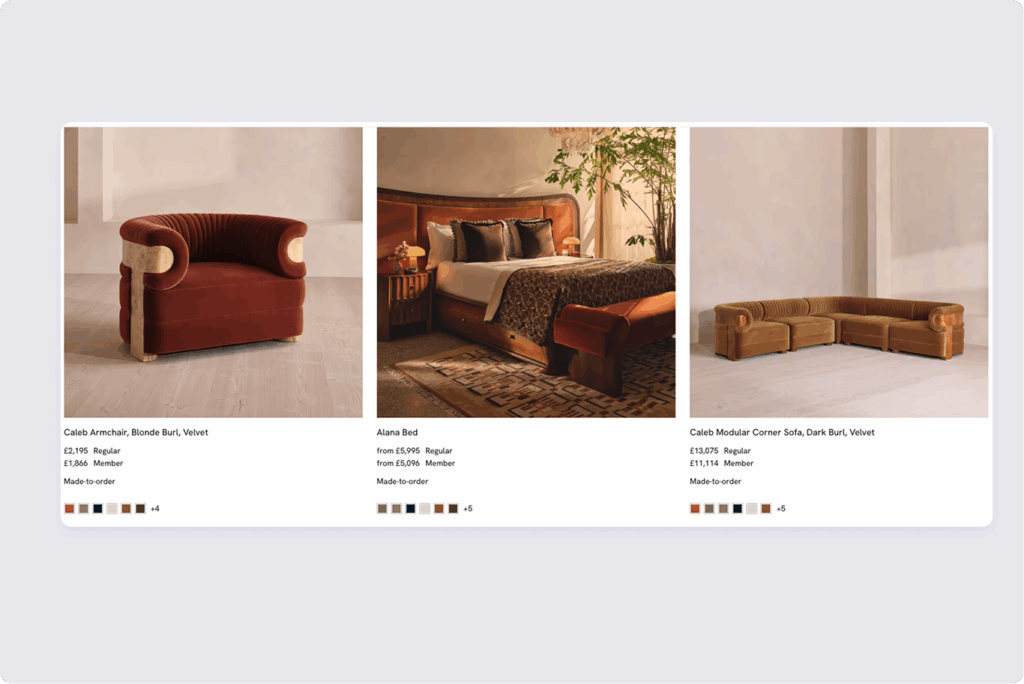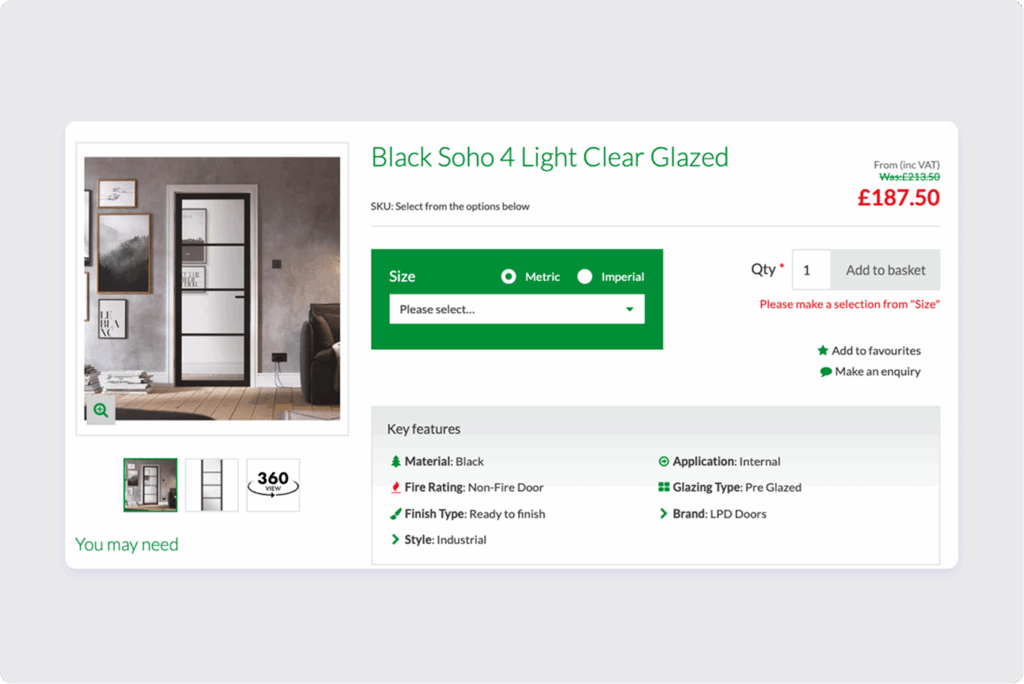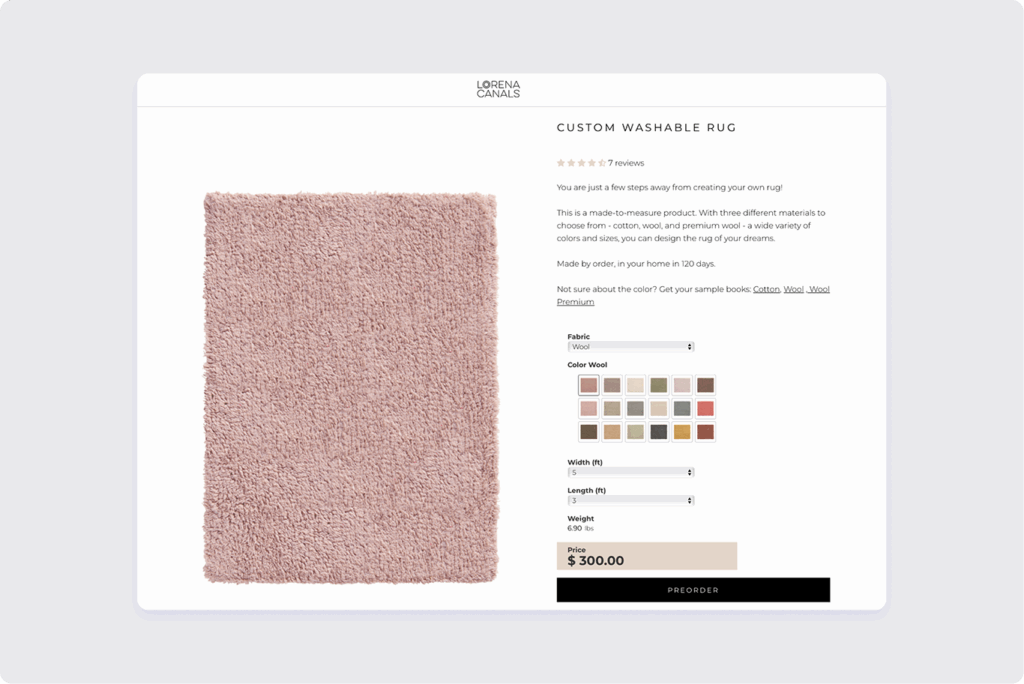The furniture industry is experiencing a seismic shift. Customers no longer settle for mass-produced pieces that look identical to their neighbors. They want something different, something that reflects their unique taste and fits their exact space. This growing appetite for personalized, handcrafted furniture has made the made-to-order model more viable than ever especially when selling through ecommerce
If you’re selling custom furniture on Shopify, you’re riding a powerful wave. But you’re also navigating some tricky waters. Long production times, complex pricing structures, and managing customer expectations can sink your conversion rates.
This guide will walk you through setting up a Shopify store that handles the complexity of made-to-order furniture and turns it into competitive advantages.
Understanding made-to-order furniture on Shopify
Made-to-order furniture differs fundamentally from ready-to-ship products. Instead of maintaining inventory that sits in a warehouse gathering dust, each piece is crafted after a customer commits to purchase. This model offers significant advantages: zero inventory costs, minimal waste, and the ability to offer extensive customization.
But these benefits come with challenges. Production can take weeks or even months. Customers need to visualize products they haven’t seen. And pricing becomes exponentially more complex when you’re factoring in different wood types, dimensions, finishes, and hardware options.
The traditional Shopify setup wasn’t designed with these complexities in mind. Out of the box, it assumes you have physical inventory, standard variants, and immediate shipping. For made-to-order Shopify merchants, this creates friction at the worst possible moment: checkout.

Essential Shopify setup steps for made-to-order furniture
Inventory management that actually works
Made-to-order furniture creates a unique inventory paradox: you’re never holding stock, but you’re never truly out of stock either. Traditional Shopify settings assume you have products sitting in a warehouse and will block sales when inventory hits zero.
For Shopify stores doing custom furniture, this doesn’t make sense. The key is adjusting your store settings to accept orders continuously, regardless of inventory counts, so customers can place orders freely while you craft each piece on demand.
Setting crystal-clear expectations
Transparency is your best friend in the made-to-order world. Customers who understand the process from the start are far less likely to send anxious emails or file chargebacks.
Add timeline information everywhere it matters. Your product descriptions should prominently feature production and shipping timeframes. Use specific language: “This dining table is handcrafted to order and ships in 6-8 weeks” hits differently than vague promises of “coming soon.”
Consider adding a custom field or banner to your product pages that reinforces the made-to-order nature. Some Shopify merchants use apps to display countdown timers showing when production slots are available.

Building comprehensive product pages
Your Shopify product pages need to work harder than standard e-commerce listings. High-quality photography showing different angles, close-ups of finishes, and lifestyle images in actual homes help customers visualize the final product.
Include detailed specifications: exact dimensions, materials used, weight capacity, care instructions, and assembly requirements. The more information you provide upfront, the fewer questions you’ll field later.
Leveraging apps to improve the made-to-order experience
This is where Shopify’s app ecosystem becomes invaluable. The right apps can transform your store from a basic catalog into a sophisticated custom ordering system.
The pricing puzzle
Standard Shopify variants work great when you’re offering a shirt in small, medium, or large. They break down completely when you’re pricing a custom bookshelf based on height, width, depth, wood species, number of shelves, backing material, and finish type.
This is where custom price calculator apps become essential. These tools let customers input their specific requirements and see prices update in real-time. A customer selecting a walnut finish instead of oak, or adding two feet to the length, immediately sees the price adjustment.
The best calculator apps offer formula-based pricing that can handle complex logic. You might charge per square foot for the primary surface area, add premiums for exotic woods, apply volume discounts for larger pieces, and factor in shipping costs based on dimensions.

Strategic upselling
Made-to-order purchases already involve significant consideration. Use this to your advantage by offering relevant add-ons: protective finishes, custom staining, expedited production, white-glove delivery, or professional installation.
The beauty of using a custom price calculator is that these upsells become seamless parts of the configuration experience. Instead of presenting add-ons as afterthoughts, you can include them as selectable attributes directly in your calculator.
When a customer chooses a premium polyurethane finish or adds a waterproof sealant, the price updates instantly in real-time. This transparency removes the awkward surprise of hidden costs and actually encourages customers to explore premium options they might otherwise skip.
Present these options clearly during the customization process rather than after checkout. When a customer is already configuring their dream piece, they’re more receptive to upgrades. The calculator makes it feel like a natural part of the design process, not a sales tactic.
Designing a customer-centric Shopify store
Visual consistency and reminders
Your homepage, collection pages, and checkout should consistently communicate that items are made to order. A small banner reading “All furniture handcrafted to your specifications” sets appropriate expectations from the first click.
Product photos should be professionally shot with clean backgrounds. While lifestyle photography helps customers visualize pieces in their homes, you also need crisp, detailed shots that showcase craftsmanship. Consider investing in a photo editing tool or app that handles background removal to maintain a polished, consistent look.
Interactive elements that build confidence
Live chat functionality answers questions in real-time during the crucial decision-making phase. Many furniture purchases involve multiple family members and happen over several days. Being available to answer questions about dimensions, materials, or lead times can make the difference between a sale and an abandoned cart.
For higher-end pieces, consider offering virtual consultations. A 15-minute video call where you discuss options and answer questions often results in larger orders.
Managing orders and production workflow
Communication that builds trust
Send update emails at key milestones. When an order enters production, when it reaches finishing, and when it ships are natural touchpoints. These proactive updates reduce “where’s my order?” inquiries significantly.
If delays occur (and in custom fabrication, they will), communicate immediately with transparency. Customers appreciate honesty and advance notice far more than optimistic estimates that prove inaccurate.
Email marketing works exceptionally well for furniture. Customers who’ve purchased once often return years later for additional pieces. Build a post-purchase email sequence that checks in on satisfaction, requests reviews, and offers early access to new designs.
From complexity to competitive advantage
Setting up a Shopify store for made-to-order furniture requires more thought than selling mass-produced items. But the rewards justify the effort. You’ll build deeper customer relationships, command premium prices, and create a sustainable business model with minimal waste.
The key is removing friction from the custom ordering process while maintaining the personal, bespoke nature that makes made-to-order special. Every element of your store should work together to build confidence: from detailed product pages to transparent timelines to seamless pricing.
This is exactly where Apippa Custom Price Calculator shines. It transforms the most challenging aspect of selling custom furniture (dynamic, complex pricing) into an intuitive customer experience.
With its drag-and-drop builder, you can create calculators that handle any pricing logic your business requires, from simple dimension-based pricing to complex formulas involving multiple material choices and quantity breaks.
If you’re serious about scaling your custom furniture operation on Shopify, Apippa Custom Price Calculator is essential for providing the best shopping experience to your customers.
